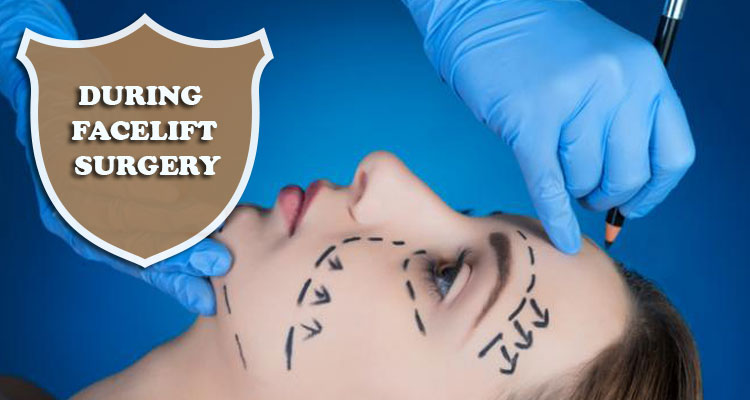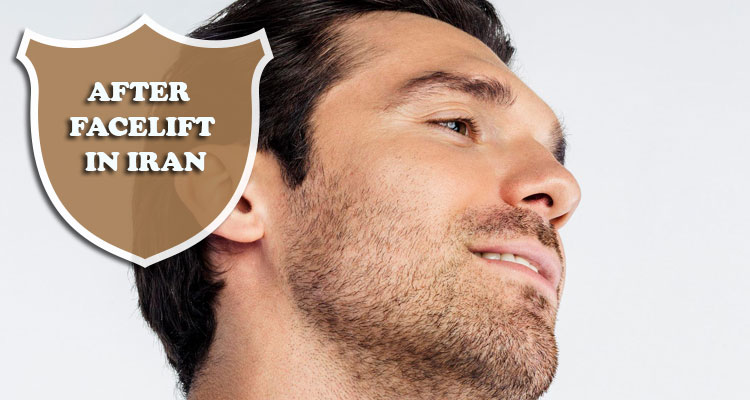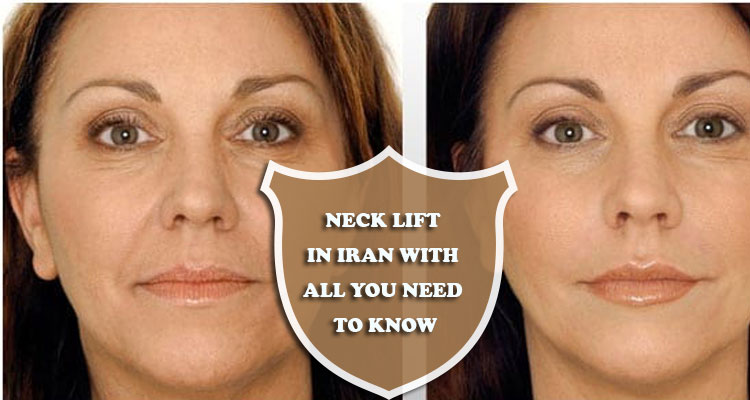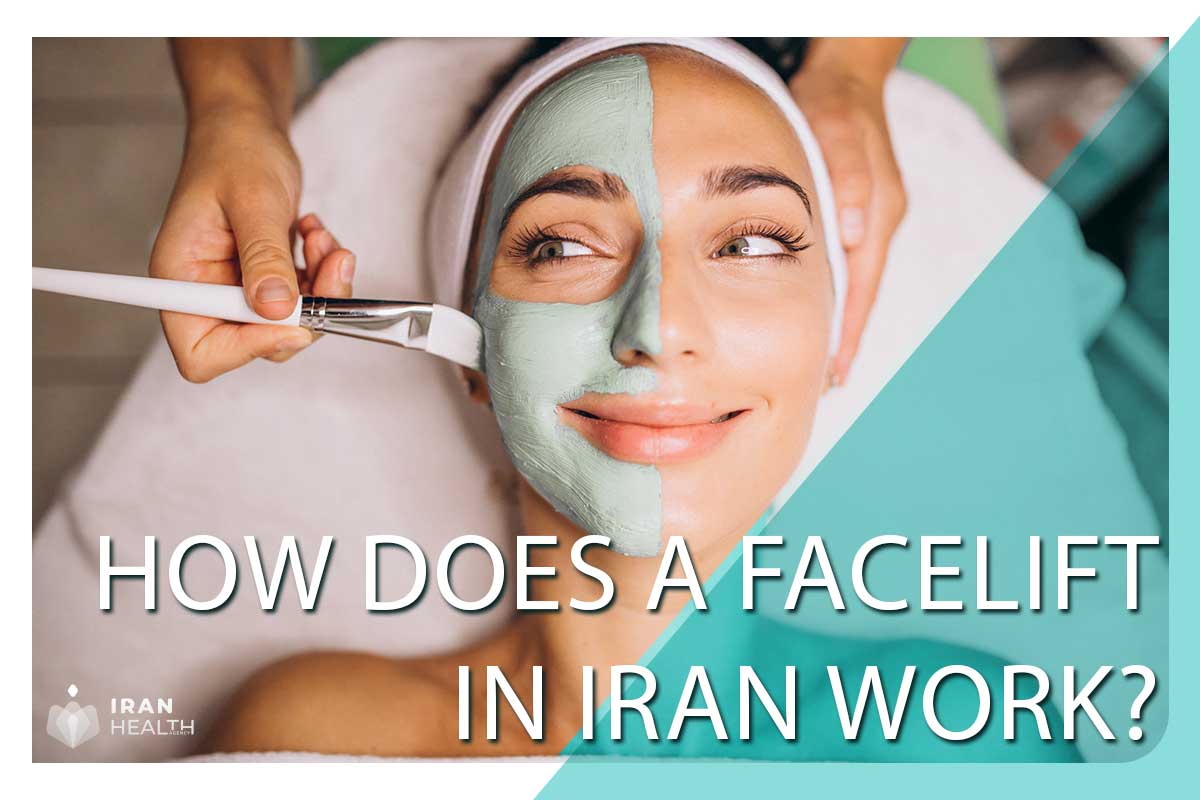Many people have a younger imagination of themselves, and a facelift in Iran is a way to realize this picture. There is no problem with that, and there is no reason why we should not look so young. This type of cosmetic surgery is officially called a rhytidectomy.
This method lifts and tightens the deep facial tissues that are sagging on the the cheeks and jawline, smooths the deep folds of skin on your face, removes excess skin, and corrects other facial changes that occur with aging. This is a safe, effective and long-lasting way to rejuvenate the look of your face. Results are usually expected to last for about 10 years.
Why to have a facelift in Iran?
As we age, the shape and appearance of our face changes, simply because of the natural changes caused by aging. Aging skin loses its elasticity over time and causes it to loosen, while fat deposits may increase in some areas of our face and facial tissues may lose volume in others.
you can see: facelift by tajmilclinic
Plastic surgery in iran can reduce some of the age-related changes in your face, such as:
- Deep wrinkles
- Droopy appearance of your cheeks
- Extra skin on your lower jaw line that becomes the jow
- Deep folds of skin that form from the side of the nose to the corner of the mouth
Many people associate facelift in Iran with the concept of “turning the clock back” and it is true that they can give a naturally youthful look to your face.
But this is not always due to pride. Often, how people feel about their appearance can make them feel so self-conscious that it can negatively affect not only their self-esteem, but also their personal relationships or even their job.
A significant number of patients do not try to look younger, but just want to look like a “better” version of themselves.

Initial consultation
Before committing to surgery or a “facelift in Iran”, it is best to consult a surgeon first to discuss your specific condition and most likely to have an examination.
read more: The best age for a facelift
Medical History
You may be asked to provide your surgeon with your entire medical history, so it may be a good idea to prepare this in advance. You may be asked to answer questions about any medical conditions you have now as well as in the past. The surgeon may be interested in any previous surgery, including cosmetic surgery in Iran, and any complications that may result from any of those surgeries. You may also have to give a detailed history of using tobacco, alcohol or drug use.
Because smoking blocks blood flow to the skin, it can meddle with the healing process to some extent. Therefore, patients are usually asked to abstain from smoking for at least one or two weeks before surgery and at least two weeks after surgery. Depending on your specific information, the surgeon may ask record from any of your former or current doctors. And if you have questions about your ability to have surgery, you may need to see a specialist.
Check medications
You may be asked to provide a list of all medications you take regularly, including their doses and frequency of use. This is not limited to prescription drugs, you can also have a list over-the-counter drugs, vitamins and supplements, including herbal products. This is necessary to ensure that patients avoid any medications that may increase bleeding, including aspirin.
Facial examination
The surgeon can perform a thorough facial examination and closely examine your skin quality, facial shape, bone structure, and fat distribution to determine what is the best option for you. Your face may be photographed from different angles, possibly with close-ups of some of your features.

Expectations
You may be asked exactly what you hope for and what you expect from the results of this surgery. The surgeon can explain what you may get, how your appearance may change, and what the surgery may not eliminate, such as any asymmetries that occur naturally in your face. A facelift in Iran cannot smooth many of the fine lines or crepe-y tissue of your skin that develops with age, but there are many non-invasive methods that can help.
How to prepare
Once you have set your surgery date, there are a number of things you can do to prepare for it, some before and some after.
Check medications
Your doctor can tell you which of your medications you can continue as before, and if there are any doses that can be adjusted.
You may be instructed on whether there is a drug to stop taking and exactly when you should stop taking it. For example, you may need to stop taking blood-thinning medications or supplements at least two weeks before your surgery. It is absolutely vital that you follow all of your medication-related instructions explicitly.
Assistance
It is possible to perform this procedure on an outpatient basis. In this case, it is better to arrange for someone not only to take you home after the surgery, but also to stay with you until the first night after the surgery.
Personal
Before surgery, you may want to make sure your home has everything you might need for a few days if you do not want to go out.
It is also recommended that you refrain from straightening, bleaching or even coloring your hair for at least six weeks after a facelift in Iran. So you may want to take care of each one of them in advance.
You may need to wash your face and hair with a germicidal soap before surgery. You may most likely be asked not to eat anything after midnight the night before the surgery, although you may have water.
Your surgeon can tell you if there is any medicine you can take that day.
What happens during facelift surgery in Iran?
This type of cosmetic surgery in Iran can be performed in an outpatient surgery center as well as in a hospital. A facelift in Iran usually takes between two and four hours. However, it is probable to have other procedures simultaneously, which may take longer. However, it basically consists of three stages.

Anesthesia
Your surgeon may prescribe the best anesthesia option for your comfort during the operation. General anesthesia completely anesthetizes you and is often the first choice of both doctors and patients. However, in cases where general anesthesia is not medically recommended for the patient, a combination of local anesthesia and intravenous sedation can often be used during surgery. Local anesthesia causes numbness in the area being operated on, and the sedative helps the patient to relax during the operation, which means that they are unlikely to remember anything about it afterwards.
surgery
First, incisions are made. They usually start in your hairline at the temples and continue downward in the front of your ears to the bottom of the scalp behind them.
Your skin can then be lifted so that the surgeon can lift and tighten the underlying muscles and deep tissues of the face. Some of your facial fat may be redistributed, removed or even sculpted. Then your facial skin can be placed back over the new raised contours of your face.
At that point, any extra skin is removed. The incisions can be closed in different ways. If stitches are used, they may be removed a few days later or resolve on their own, depending on what your surgeon prefers.
Skin adhesives may be used instead of sutures or stitches. When surgical adhesive is applied along the incision line, it acts as a vasoconstrictor, meaning it can close blood vessels. The sealant can stop the bleeding and close the incision, then your body can expel it. It is believed that this technique can decrease bruising and accelerate recovery time.
read more: Which Country Has the Most Face Surgery?
Results
There may be some bruising and swelling immediately after surgery, but it starts to improve within about two days and is not practically noticeable after 10 to 14 days. That’s when you can really see the results.
Your surgeon can tell you when you might cover your face with makeup, but most patients feel comfortable being seen in public several days after facelift in Iran.
While everyone heals variously, patients usually return to normal activities about two weeks after surgery, although it is best to wait at least four weeks before doing any hard work.
Your doctor can give you detailed instructions about the follow-up care needed and the type of activity at which steps are allowed.
After facelift in Iran
Your bandages will probably be replaced the day after surgery. Two or three days later, you may be able to replace them with an elastic face sling. Usually in the first week, follow-up visits are done to evaluate your face, monitor progress, and remove stitches if necessary.
Your doctor can also give you instructions on what to be careful about. Many of these things are probably common sense, such as avoiding too much pressure and movement around the cuts, protecting them from the sun, and do not wear a lot of clothes on your head.

Combined procedures for facelift in Iran
Many people like to do extra surgeries at the same time as the facelift in Iran to maximize the effect as well as minimize the recovery time. Eye lifts, eyebrow lifts and neck lifts are big favorites.
Facelift in Iran postoperative cares
1.Bleeding and swelling are normal for a few days after facelift surgery, but if the swelling and bleeding increase significantly after surgery, this should be reported to your doctor immediately, as this may require further examinations.
2.72 hours after the face lift operation, it is necessary for the patient to see a specialist doctor to examine operation site.
3.One week after the operation, the patient should see his or her doctor again.
4.It should be noted that except for a small number of people in other cases, the sutures of the operated site will be removed on the seventh day.
5.Consumption of salt and foods containing sodium should be minimized by two weeks after surgery.
6.Patients should take their medications on time and to the end.
7.Smoking after surgery disrupts the healing process and delays the healing process, so it should be avoided for up to 14 days after surgery.
9.The pain from the operation may worsen for up to 72 hours, do not worry because it will decrease after that; during this time, you can reduce the pain of the operation by taking painkillers.
10.Ice compresses can help reduce bruising, but it should be noted that if you are not sensitive to cold, it should be used, also cold compresses should be used with extreme caution and intermittently.
11.After the operation, in order to prevent the swelling from getting worse and to reduce the pain, you can keep your head higher than usual with the help of a few pillows at rest.
12.Heavy activity is prohibited for several weeks, but routine activity is not prohibited.
Factors affecting the skin (facelift in Iran)
1.Aging
2.Long exposure to sunlight
3.Weight Loss
4.Living environment
5.Stress
6.Tobacco and alcohol consumption
7.Genetics
What are the drawbacks and side effects of facelift in Iran?
All surgeries in the category of medical and cosmetic surgeries have their own risks. The risk of surgery is usually reduced when a specialist performs facelift in Iran based on surgical experience as well as giving accurate information and instructions on postoperative care.

if you want to know about necklift you can click the article: Neck lift in Iran with all you need to know
But if it is done by inexperienced and unskilled doctors, the risk of any of these complications increases. Here are the most common possible risks of facelift in Iran:
Postoperative complications:
1.The most common postoperative complications include infection, anesthesia sensitivity, swelling, bleeding, and hematoma.
2.Hair loss: Hair may fall out near the incision site.
3.Lack of skin: This is very rare and is especially true for people who are smokers, because excessive smoking slows down blood flow. These people do not undergo any surgery unless they quit smoking a month before.
4.Anesthesia facelift in Iran and burning around the skin incision: These changes may last from a few months to 2 years.



